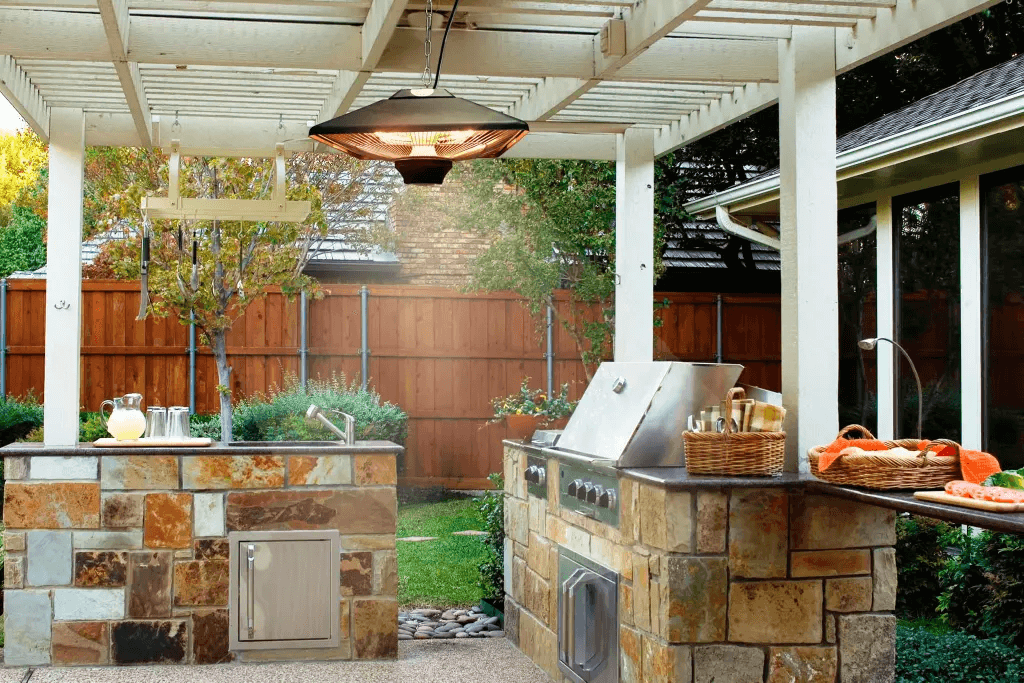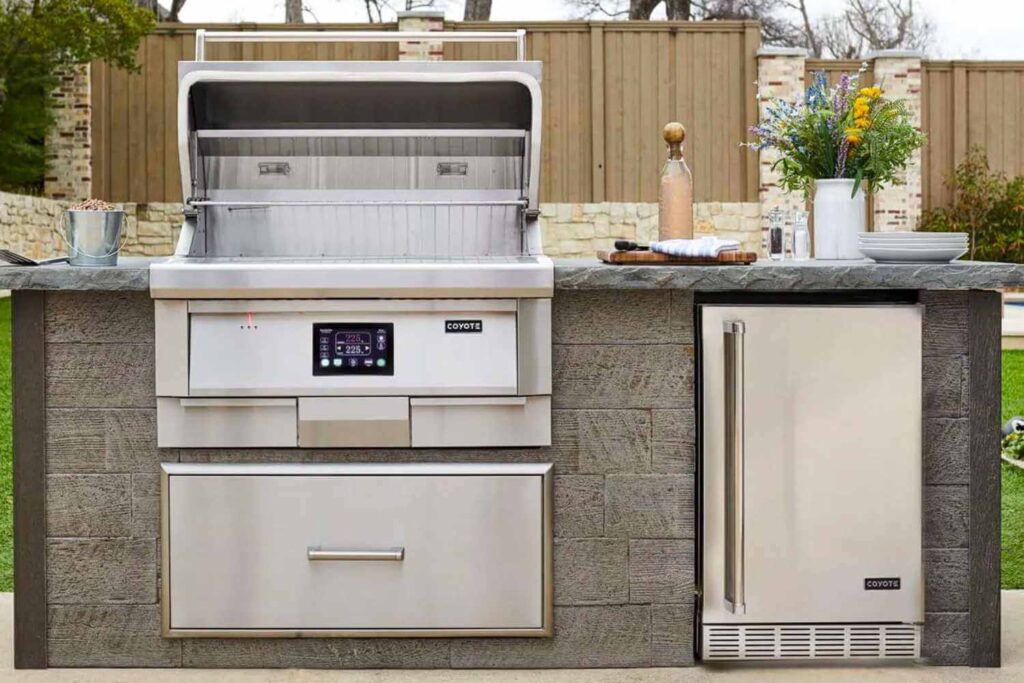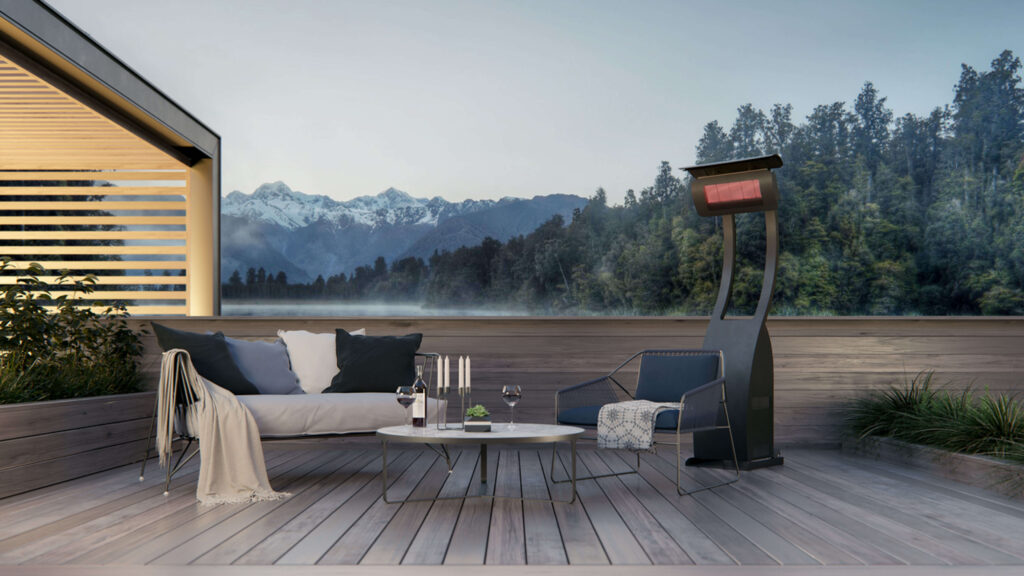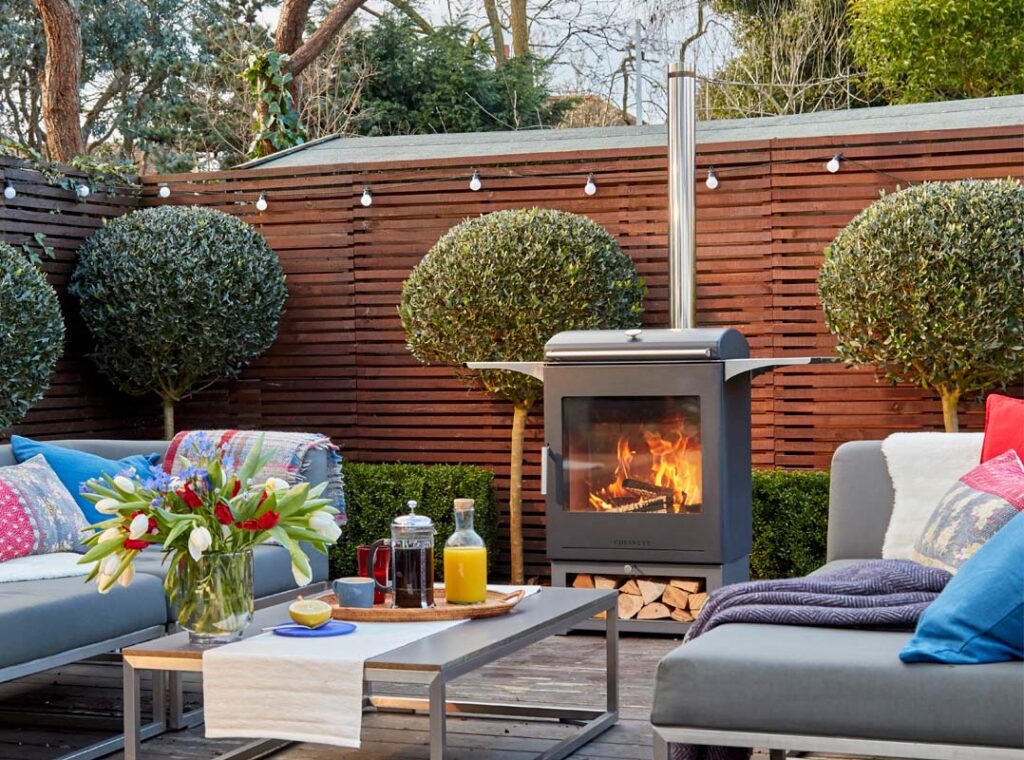
Howdy there, fellow outdoor aficionados! It’s that splendid time of the year when the sun shines brightly, and the backyard beckons. Before you embark on your culinary escapades and delightful patio gatherings, it’s imperative to ensure your outdoor appliances are in tip-top shape. In this extensive guide, we’ll delve deep into the world of outdoor appliance maintenance, focusing on the intricacies of grill and patio heater care.
Grilling Goodness: Maintaining Your Grill
Prepping Your Grill for Action
Before you fire up the grill and unleash your inner BBQ maestro, let’s ensure your trusty cooking companion is ready for the task.
Cleaning Checklist:
- Remove grates and burners: The first step to grill greatness is taking out the grates and burners. This allows for a thorough cleaning and inspection.
- Scrub grates clean with a grill brush: Those charred remnants of last summer’s cookout need to bid adieu. Use a grill brush to scrub away the grease and grime.
- Clear out any debris from the burners: It’s not just the visible stuff; make sure to clear out any debris clogging the burners. This ensures an even and efficient flame.
- Wipe down the exterior with warm, soapy water: The exterior deserves some love too. Wipe it down with warm, soapy water to remove any accumulated dirt and residue.
- Don’t forget the grease tray—empty it!: The grease tray is often overlooked. Empty it to prevent potential flare-ups.
After the cleaning frenzy, inspect your grill for rusty parts, loose screws, or damaged hoses. Any compromised components should be replaced or repaired promptly to ensure safe and efficient grilling. If you’re uncertain about specific parts, consult your grill’s trusty manual.
The Gas Game
Gas grills, beloved for their convenience, require a bit more attention to ensure safety and sizzle.
Gas Grill Tips:
- Inspect the gas hose for cracks or leaks: A simple soap and water test will unveil any leaks, marked by the formation of bubbles when you turn on the gas. If you spot any, replace the hose pronto.
- Clean the burner tubes: Over time, these tubes can become clogged with debris, impacting your grill’s performance. Employ a pipe cleaner or brush to clear any obstructions.
- Check the propane tank: Ensure it’s not past its expiry date and secure it properly to the grill. A loose tank is an accident waiting to happen.
Charcoal Charisma

For those who savor the authentic smoky flavor of charcoal grilling, there’s a unique set of care instructions.
Charcoal Grill Insights:
- Clear ash after every use: A buildup of ash can obstruct airflow and heat distribution. A small ash shovel will do the trick.
- Replace old charcoal: Damp or moisture-absorbed charcoal won’t light up properly. Invest in fresh charcoal for a more successful cookout.
- Keep your vents clean and open: Proper airflow is vital for maintaining the right cooking temperature. A clogged vent can lead to endless frustration at the grill.
Routine Inspections and Repairs
Regular check-ups are the secret to longevity for both your grill and patio heater. Just like you’d visit the doctor for an annual check-up, your outdoor appliances require periodic inspections.
Maintenance Schedule:
- Check your grill’s burners: Ensure they’re heating evenly. If not, it could be a sign of clogs or damage that needs attention.
- Inspect the grill’s ignition system: A reliable ignition system is essential for hassle-free grilling. Check it periodically to ensure it’s in top form.
- Examine your patio heater’s pilot light: If the pilot light isn’t igniting, it could be a thermocouple issue. A replacement may be in order.
- Look at hose connections: Regularly inspect the hose connections on both your grill and patio heater to verify they’re tight and leak-free.
- Clean the reflector shield: The reflector shield on your patio heater can accumulate dust and debris. Clean it to keep your heater operating efficiently.
- Check for rust: Rust on your grill or patio heater is more than just an eyesore; it’s a sign of corrosion. Address it before it becomes a major problem.
Safety First
When dealing with gas-powered appliances like grills and patio heaters, safety is paramount. Always follow these safety guidelines:
- Keep the area well-ventilated: Grilling or using a patio heater in an enclosed space can be dangerous due to the buildup of carbon monoxide. Ensure proper ventilation.
- Maintain a safe distance: Keep flammable materials, such as paper towels or cleaning supplies, at a safe distance from your grill or patio heater.
- Store propane tanks properly: If you have extra propane tanks, store them outdoors in an upright position. Never store them in a confined space.
- Read the manufacturer’s manual: Every grill and patio heater is different. Be sure to read and follow the manufacturer’s instructions and safety recommendations.
- Keep an eye on kids and pets: When outdoor appliances are in use, always supervise children and pets to prevent accidents.
With the right care and attention, these faithful companions will continue to serve you and your loved ones for years to come.
Now, go out there, fire up the grill, and bask in the cozy warmth of your patio heater, knowing you’ve got it all under control. Happy grilling and patio chilling, and here’s to a season filled with outdoor adventures and cherished memories!
For a truly memorable experience, invest the time and effort into maintaining your outdoor appliances. With the proper care, your grill and patio heater will remain reliable companions for countless seasons of outdoor enjoyment. So, whether you’re a weekend grilling guru or a patio party aficionado, follow these guidelines, and you’ll be all set for a season of outdoor fun.
However, the work doesn’t stop here. As you use your grill or patio heater throughout the season, keep an eye out for any signs of wear and tear. Regularly inspect hoses, connections, and other crucial components, and address any issues promptly. This proactive approach can help you avoid unexpected breakdowns and extend the lifespan of your outdoor appliances.
In addition to the maintenance tips mentioned earlier, consider the following pointers for long-term outdoor appliance care:
Seasonal Overhauls
At the start of each season, give your grill and patio heater a thorough inspection and cleaning. This is the ideal time to address any issues that may have arisen during storage or due to environmental factors.
Spring Awakening:
- Clean your grill thoroughly: Remove any dust, debris, or cobwebs that may have accumulated during the winter months. Inspect the burners and ignition system to ensure they are in working order.
- Check the patio heater’s components: Verify that the reflector shield, burner, and ignition system are clean and free of obstructions. Test the pilot light to make sure it ignites without issues.
- Inspect propane tanks: If you’ve stored propane tanks separately, examine them for any signs of damage or wear. Make sure they are still within their recommended lifespan.
Fall Preparations:
- Clean and cover: Before the winter chill sets in, give your grill and patio heater a final cleaning. Once they are spick and span, cover them with protective, weather-resistant covers. This added layer of defense will shield them from the harshest elements.
- Secure storage: If you have space, store your grill and patio heater indoors during the winter. If that’s not possible, ensure they are well-covered and protected from heavy snow and freezing temperatures.
Professional Maintenance

While regular upkeep goes a long way, it’s also wise to schedule periodic professional maintenance for your outdoor appliances. An experienced technician can provide a thorough inspection and perform any necessary repairs or part replacements. This can extend the lifespan of your appliances and keep them running at peak performance.
Upgrade and Replace
As much as we’d like our favorite grill or patio heater to last forever, there comes a time when it makes more sense to upgrade or replace them. Technological advancements and improvements in safety standards mean that newer models often offer better efficiency and safety features.
When considering an upgrade, research the latest models and select one that meets your needs and preferences. Don’t forget to properly dispose of your old appliance, following local regulations and guidelines for safe disposal.
Environmentally Friendly Practices
Caring for your outdoor appliances extends beyond their maintenance. It’s essential to adopt environmentally friendly practices. If you have an older grill, consider upgrading to a more energy-efficient model that reduces gas or charcoal consumption. Additionally, make sure to dispose of propane tanks and old grills responsibly, recycling them when possible.
Final Thoughts
With this comprehensive guide, you’re now armed with the knowledge and tips to keep your grill and patio heater in top-notch condition throughout the seasons. Regular maintenance, inspections, and a keen eye for potential issues are your allies in ensuring these outdoor appliances continue to be the stars of your outdoor gatherings.
Remember, a little TLC goes a long way in extending the lifespan and enhancing the safety of your grill and patio heater. So, whether you’re sizzling up steaks or cozying up on a brisk evening, you can do so with confidence, knowing your outdoor appliances are in perfect working order.
Now, go ahead and enjoy your outdoor adventures to the fullest. Fire up that grill, bask in the warm glow of your patio heater, and create unforgettable moments with family and friends. Happy grilling and patio chilling!
Frequently Asked Questions (FAQs) – Outdoor Appliance Maintenance: Grill and Patio Heater Care
Got questions about maintaining your outdoor appliances? We’ve got you covered! Here are some of the most common queries regarding the care and maintenance of grills and patio heaters:
Q1: How often should I clean my grill and patio heater?
A1: Regular cleaning is essential for both grills and patio heaters. After each use, it’s a good practice to scrape grill grates and empty grease trays. Additionally, a more thorough cleaning and inspection should be performed at the beginning of each grilling season and before storing your appliances for the winter.
Q2: How do I check for gas leaks in my grill or patio heater?
A2: To check for gas leaks, mix a solution of soap and water and apply it to the gas connections, hoses, and tank valve. Turn on the gas. If you see bubbles forming, it indicates a leak. In this case, turn off the gas immediately and address the issue before using the appliance.
Q3: Can I use my patio heater indoors?
A3: No, patio heaters are designed for outdoor use only. Using them indoors can lead to a buildup of carbon monoxide, which is extremely hazardous. Always operate your patio heater in a well-ventilated outdoor area.
Q4: How do I store propane tanks safely?
A4: When storing propane tanks, keep them in an upright position in a cool, dry place. Store them outdoors, away from direct sunlight, heat sources, and open flames. Always make sure the tank valve is closed securely.
Q5: What should I do if I find rust on my grill or patio heater?
A5: Rust on outdoor appliances is common due to exposure to the elements. To address it, use a wire brush to remove surface rust. For more severe cases, consider using a rust converter, which can help stop rust from spreading. To prevent rust, cover your appliances when not in use and store them in a dry place during the winter months.
Q6: How do I replace the propane tank on my grill?
A6: To replace the propane tank on your grill, follow these steps:
- Ensure the grill is turned off and cooled down.
- Disconnect the old propane tank by turning the valve clockwise to close it.
- Disconnect the hose from the tank.
- Remove the old tank from the grill.
- Place the new tank in the same location.
- Reattach the hose to the new tank.
- Open the valve on the new tank slowly, and check for gas leaks as mentioned in A2.
- Once you confirm there are no leaks, your grill is ready to use.
Q7: When should I consider upgrading or replacing my grill or patio heater?
A7: Consider upgrading or replacing your grill or patio heater if you experience frequent issues, such as persistent gas leaks, burner problems, or if your appliance is old and inefficient. Newer models often offer improved safety features, energy efficiency, and overall performance.
Q8: Can I recycle my old grill or propane tank?
A8: Yes, you can often recycle old grills and propane tanks. Check with your local recycling center or waste management facility for guidelines on how to properly dispose of these items. Recycling is an environmentally responsible way to dispose of old appliances.
Q9: How can I find a professional technician for maintenance or repairs?
A9: To find a professional technician for your grill or patio heater, you can:
- Check with the manufacturer or the retailer where you purchased the appliance.
- Ask for recommendations from friends or family who have outdoor appliances.
- Search online for local appliance repair services specializing in grills and patio heaters.
Q10: Are there any safety precautions I should follow when using outdoor appliances?
A10: Safety is paramount when using outdoor appliances. Always maintain proper ventilation, keep flammable materials at a safe distance, and follow the manufacturer’s safety guidelines. Supervise children and pets, and regularly inspect hoses, connections, and burners for any signs of wear or damage.
